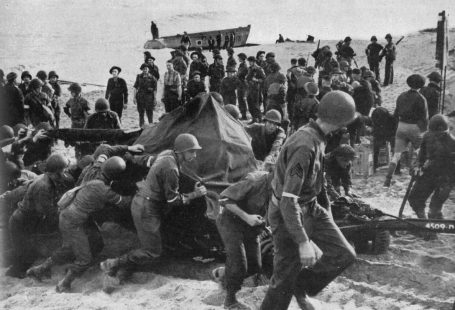This week we are delighted to have added 430,247 brand new pages to The Archive, with a trio of brand new newspaper titles joining us over the past seven days. Meanwhile, we have updated 80 of our existing titles, with updates to publications from across England, Scotland and Wales, from Abergele to Winsford.
So read on to discover more about our three brand new titles of the week, as well as to discover which of our 80 titles have been updated. Meanwhile, you can learn all about the Whitsun holiday of 1950, when petrol rationing finally came to an end, and cars travelled Britain’s roads in their thousands.
Register now and explore the Archive
The first of our three new titles of the week is the Eastleigh Weekly News and Hants Gazette, which was established in the Hampshire town of Eastleigh in 1892. Politically independent, the Eastleigh Weekly News appeared every Saturday at the price of one pence, and filled eight pages.
A lively and informative local newspaper, the Eastleigh Weekly News had a particular focus on sport, reporting on the latest from the Eastleigh Athletic Club and the Eastleigh Rugby Football Club. The newspaper also contained reports on local cricket matches, and paid especial attention to local football matches, detailing, for example, matches between Andover and Winchester and the Salisbury Football League.

Meanwhile, the Eastleigh Weekly News took a look at all the news from the area, featuring reports from the Eastleigh District Council, the Whitchurch and Stockbridge Board of Guardians, the Romsey Petty Sessions and the Rural District Sessions. It also contained updates from the town of Eastleigh and the surrounding area, from the likes of Crampmoor, Twyford, St Denys and Allbrook.
Furthermore, the Eastleigh Weekly News looked beyond its local area to report on various items of national news, featuring intriguing headlines like ‘Fight at a Funeral’ and ‘Death from Anthrax.’ The newspaper also contained a summary of news, as well as serialized fiction, with stories like ‘The Man With A Thumb’ by W.C. Hudson adorning its pages. In addition to this, you can find within this publication’s pages gardening notes and railway timetables, the latter being especially important in the railway town of Eastleigh, which had been transformed from a village into an important point in the London and South Western Railway network.
We move further north now, beyond London to St Neots, a town that was part of the historic county of Huntingdonshire, but now forms a part of Cambridgeshire, and the St Neots Town Crier. The St Neots Town Crier was founded in St Neots in 1973, with its editorial offices in the town, which was named after ninth century monk Saint Neot, whose remains were brought to the town from Cornwall in approximately 980 AD.

The St Neots Town Crier was a weekly freesheet tabloid that served St Neots and its surrounding villages of Great Paxton, Little Paxton and Cambourne. The newspaper was one of the three Town Crier group of newspapers, which also included the Huntington Town Crier and the St Ives Town Crier. Appearing every Thursday, in 2009 the St Neots Town Crier merged with the St Neots Weekly News to form the St Neots News & Crier.
Our final new newspaper of the week is the Stockport Times, which was the free sister paper of the Stockport Express, and was distributed free to nearly 30,000 homes across the large town of Stockport in Greater Manchester. The Stockport Times closed in 2015 and was replaced by the Manchester Weekly News, which is one of the biggest free weekly newspapers in the United Kingdom.

That’s it from our exciting trio of new newspapers this week, and there’s plenty more to be excited about with our updated newspaper titles. Highlights include the nearly 30,000 pages we have added to Scottish tabloid the Daily Record, whilst we have added over 19,000 pages to Derbyshire title the Ilkeston Express and Hertfordshire title the Hoddesdon and Broxbourne Mercury respectively. Meanwhile, we have added over 12,000 pages to the Nottingham Evening Post.
We’ve also made additions this week to some of our Welsh newspaper titles, including to Welsh language title Herald Cymraeg, as well as to the Abergele & Pensarn Visitor and the Herald of Wales.
May 1950 – The End of Petrol Rationing
On 26 May 1950 petrol rationing finally came to an end in the United Kingdom, over ten years since it was first introduced on 22 September 1939. This was perfect timing, as the Whitsun Spring Bank Holiday was on 29 May 1950, meaning that people could use their cars without the need for petrol coupons.
New pages added this week to the Herald of Wales give us a wonderful flavour of the ‘Off-ration weekend,’ picturing the scenes in Welsh seaside resorts on 3 June 1950. It details how there was a ‘rush by road to the sea’ to places like Rhyl and Llandudno, which ‘enjoyed their busiest Whitsun week-end in years,’ producing ‘just-like-before-the-war scenes.’

Indeed, this was the theme across the country, with the Birmingham Daily Gazette on 29 May 1950 reporting how ‘Midland drivers enjoy their first petrol-free Whitsun for ten years.’ The newspaper described how the scenes witnessed were ‘just like a pre-war holiday,’ as cars travelled ‘bumper to bumper’ to the countryside and to the seaside.
The newspaper went on to relate how:
Motorists were out immediately the sun appeared. They seemed to have waited, like an invading army, for zero hour.
With cars hitting the roads in numbers not seen for a decade, it was the ‘restaurant and tea-room proprietors’ who were first to benefit from the rush, according to the Birmingham Daily Gazette. One caterer on the Birmingham-Kidderminster road stated how they ‘were fuller than ever since the war,’ whilst another commented: ‘Bank holidays look like being back to their old style, now that petrol’s free.’
Meanwhile the newspaper described the scene in Weston-Super-Mare, which saw 5,000 cars visit the town, estimated to contain between 35,000 and 40,000 visitors. Indeed, the traffic was so great that ‘police arranged diversions to the sea front.’

Closer to the Birmingham Daily Gazette’s Midlands home, ‘Picnics were the order of the day,’ with visitors swarming to Henley-in-Arden and to Stratford. There were also a ‘record number of motorists’ who visited the Clent Hills, with the newspaper commenting how ‘The hills have come into their own again with the end of petrol rationing.’

Elsewhere in the country, the ‘A.A. patrols reported roads thick with endless streams of vehicles packed bumper to bumper,’ as related the East Kent Gazette on 2 June 1950. Indeed, ‘the exodus from London to the Kent coast gave Sittingbourne its heaviest volume of holiday traffic for many years.’ The newspaper went on to detail how:
During peak periods the scene in the High Street was reminiscent of pre-war days, reaching its climax on Monday evening when thousands of holiday makers reluctantly began the long journey home. For several hours from five o’clock onwards a steady stream of traffic passed through Sittingbourne, and by half-past six the rate was over 800 vehicles an hour.

Luckily, despite such high levels of traffic, the Kent town did not see any accidents or incidents, the East Kent Gazette reporting how:
Despite the huge volume of traffic involved, the line was kept moving at a good speed. Some of the real ‘vintage’ cars found the going a bit tough, but there were no serious hold-ups and motorists generally displayed a high standard of driving.
Thanks to the end of petrol rationing, the roads of the United Kingdom were opened back up again, and many thousands of people were able to enjoy a day off that was reminiscent of pre-war days, a much needed holiday indeed.
New Titles
Title | Years Added |
| Eastleigh Weekly News and Hants Gazette | 1895-1900 |
| St Neots Town Crier | 1994 |
| Stockport Times | 1989 |
Updated Titles
This week we have updated 80 of our existing titles.
You can learn more about each of the titles we add to every week by clicking on their names. On each paper’s title page, you can read a FREE sample issue, learn more about our current holdings, and our plans for digitisation.
You can keep up to date with all the latest additions by visiting the recently added page. You can even look ahead to see what we’re going to add tomorrow.






